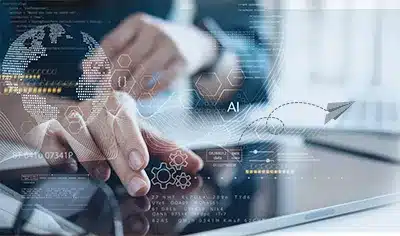Legacy platforms like AS/400 and COBOL continue to power essential operations across many industries, despite their limitations in automation, real-time insights, and cloud integration. Because they’re hard to replace and enterprises keep them alive, for a reason. Indeed, costs, integration among, and security are the key roadblocks. But it’s beyond that.
Some other reasons include their proven ability to support mission-critical workloads, such as inventory control and financial transactions, while requiring minimal staff training. So, how can enterprises become future-ready without discarding or replacing these heritage systems?
The answer lies in “AI agents”. It can be leveraged to automate processes. Augment capabilities. And extract new values. Let’s discover how in the following sections.
AI Sidecars vs. Full Rewrites
Should we rebuild our legacy systems or power them up with new capabilities? This thought may linger in everyone’s mind when considering the modernization of outdated systems.
One thing is clear that building a completely new system from scratch is expensive and time-consuming. It also requires significant effort. And if you take this step, you run the risk of overlooking undocumented business logic and missing out on the robustness that might have taken you years to develop through patches and fixes.
That’s why AI sidecars are becoming one of the go-to options for enterprises. They are independent, specialized components. Think of them as your digital assistant. Containers that run alongside your primary heritage applications. These AI sidecars don’t replace or change the system itself. They interact: Observe (read), monitor (listen), and act (share real-time insights) while boosting security and reducing technical debt.
However, in some industries that deal with complex services, architecture rewrites may be required.
Wrappers and Adapters in Action
You can also leverage the combined power of Gen AI and RPA to wrap intelligence around your legacy architecture. Following this integration, the chatbot will respond directly to user queries. Here is how it works: The AI agent triggers an RPA bot to retrieve data from legacy systems, such as mainframes or AS/400 systems. This chatbot then replies to prompts within seconds, aligned with today’s expectations.
To make things even smoother, AI adapters can be added to convert legacy outputs, including unstructured data such as PDFs and flat files, into structured formats. For instance, in the shipping and logistics industry, these adapters read the files and extract key details, such as container ID, cargo type, weight, port of origin, destination, and delivery timelines. This information can then be used to drive actions, generate insights, and facilitate further analysis and investigation.
The result? More efficient and future-proof legacy systems without costly downtime.
Getting the Foundation Right
While AI sidecars and adapters add intelligence, agility, and improve responsiveness to your legacy systems, their efficacy also relies on how well the underlying architecture is designed. This can be achieved through:
- Data ingestion pipelines:As we have observed, legacy systems typically provide data through an unstructured format, such as PDFs and flat files. These files aren’t suited for Generative AI/LLM tools such as ChatGPT, Jasper, and others. That’s why it’s crucial to design ingestion pipelines that clean and convert vast amounts of critical data into structured, readable formats.
- Prompt template with real-time context:Gen AI models require context to provide accurate resolutions. Designing dynamic prompt templates that can help generate prompts and retrieve information from legacy systems in real-time is another critical step. For example, if a user asks, “What’s the inventory status in warehouse C?”. The chatbot can fetch live status from the legacy systems and respond within a few seconds.
- Workflow orchestration:Bringing together tools such as RPA, legacy systems, LLMs, and humans requires careful coordination and management. It’s also critical because this is the most effective way to work today. Bots handle repetitive tasks. LLMs help interpret unstructured data and respond to regular queries. And humans step in when complex compliance approvals or financial decisions are involved.
Why This Approach Works
With the help of an agile, AI-infused approach, businesses can observe multiple benefits, including:
- Faster time to value: It doesn’t take years to build these systems, as nothing is done from scratch.
- Lower risk: The data and core, reliable systems remained untouched.
- Increased efficiency: AI agents help reduce grunt work and provide real-time updates.
Looking Ahead
The future of enterprise modernization with AI isn’t about discarding old, heritage architecture. It’s about empowering these systems/ applications with modern tools, so that your business can become more responsive and future ready. It also keeps you from making a difficult choice between stability and innovation, as with AI agents, you can have both.
And the right technology partner can help make this journey seamless. At Damco, we help turn outdated apps into innovation-ready platforms. Discover more about our legacy modernization services.






